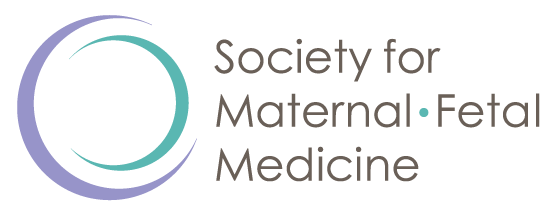
Activity Restriction in Pregnancy
Activity restriction refers to reducing one’s normal activity to any degree. Some healthcare providers recommend activity restriction to manage certain pregnancy complications. These include preterm labor, preterm premature rupture of membranes (PPROM), elevated blood pressure, preeclampsia, fetal growth restriction, placenta previa, and carrying twins or triplets.
However, research does not show that activity restriction improves outcomes in any of these conditions. In fact, restricting activity during pregnancy may cause harm, including bone loss, muscle loss, overall weight loss, and an increased risk of blood clots. The harmful effects aren’t all physical. Activity restriction can lead to emotional stress stemming from anger, frustration, worry, and financial stress from lost income.
-
The terms “bed rest” and “activity restriction” are often used interchangeably. In reality, they can mean different things. “Bed rest” is usually considered the strictest form of activity restriction, but even “bed rest” can have different meanings and varying degrees of limitations. There is no one accepted definition of bed rest.
-
Several risks are associated with activity restriction in pregnancy:
Muscle and bone loss. Long periods of inactivity can lead to muscle and bone loss. This process can begin within just a few days of reduced movement. While some strength and bone density may be regained with resumed activity, full recovery is not guaranteed. This depends on factors like age, overall health, and the length of inactivity.
Blood clots. Pregnancy is associated with an increased risk of developing blood clots in the legs (deep venous thrombosis, or DVT) and movement of clots to the lungs (pulmonary embolism, or PE). Some studies have described an additional increased risk of DVT and PE among pregnant individuals placed on bed rest compared with those not on bed rest.
Gestational diabetes. Activity restriction may increase the risk of developing gestational diabetes, especially in patients who are hospitalized for other pregnancy-related complications. More studies are needed in this area, but elevated blood sugar levels are commonly seen in nonpregnant patients placed on prolonged bed rest or activity restriction.
Stress and anxiety. Activity restriction has been shown to increase the risk of maternal anxiety and depression, as well as higher levels of family stress and financial strain due to missed work or lost income.
-
Based on data from several well-designed studies, bed rest did not reduce the risk for preterm delivery in pregnant persons either at risk for or already experiencing preterm labor. Some information suggests that among certain people at risk, preterm birth is more common in those placed on activity restriction, both at home and in the hospital.
-
There is no sound evidence that activity restriction improves the outcomes in any pregnancy complication. And, as previously stated, restricting activity during pregnancy can make outcomes worse.
-
Major medical organizations, including the American College of Obstetricians and Gynecologists, the Society for Maternal-Fetal Medicine, and leading obstetrics societies in Canada and the UK, advise against routine activity restriction or bed rest during pregnancy. Research shows that these measures do not prevent preterm birth, preeclampsia, or its complications, and they are not beneficial for managing pregnancy-related high blood pressure.
-
Unfortunately, activity restriction remains a common recommendation for many pregnancy problems. Surveys show that pregnancy care providers continue to recommend activity restriction even though most do not expect it will improve pregnancy outcomes. Although the recommendation is well-intentioned, there is no current evidence to support this practice. There is also evidence to suggest risk with activity restriction. SMFM hopes that by providing you with the most up-to-date and evidence-based guidance on bed rest in pregnancy, you and your pregnancy care provider can make informed decisions about your care.
Quick Facts
Activity restriction, sometimes called “bed rest” or “modified bed rest,” has been used to manage certain complications of pregnancy.
There is no strong evidence that activity restriction improves outcomes for any pregnancy complications. There is growing evidence that restricting activity during pregnancy may cause harm.
Harmful effects from activity restriction during pregnancy include bone and muscle loss, an increased risk of gestational diabetes, and an increased risk of blood clots.
Most importantly, there is mounting evidence that activity restriction increases the risk of mental health disorders like depression, as well as significant family disruption and stress.
For these reasons, SMFM recommends against the use of activity restriction or bed rest during pregnancy to treat any pregnancy complication.
Glossary
Activity Restriction: A term used in medicine to describe the practice of limiting a patient’s activity.
Deep Vein Thrombosis (DVT): A condition in which blood clots develop in the deep veins of the body, most commonly in the legs.
Fetal Growth Restriction: A condition in which a fetus measures smaller than about 90 out of 100 babies at the same gestational age.
Gestational Diabetes: Diabetes that develops during pregnancy.
Placenta Previa: A condition in which the placenta grows too low on the wall of the uterus so that it covers the cervix. It can cause severe, painless bleeding when the cervix begins to dilate (open) late in pregnancy.
Preeclampsia: A pregnancy-specific disorder that causes elevated blood pressure and protein in the urine.
Preterm labor: Labor that happens before 37 weeks of pregnancy.Preterm premature rupture of membranes (PPROM): When the bag of water breaks before 37 weeks of pregnancy and before the onset of labor.
Pulmonary Embolism (PE): A condition in which a blood clot that has formed in another area of the body breaks off and travels to the lungs.
Last Updated: June 2025
